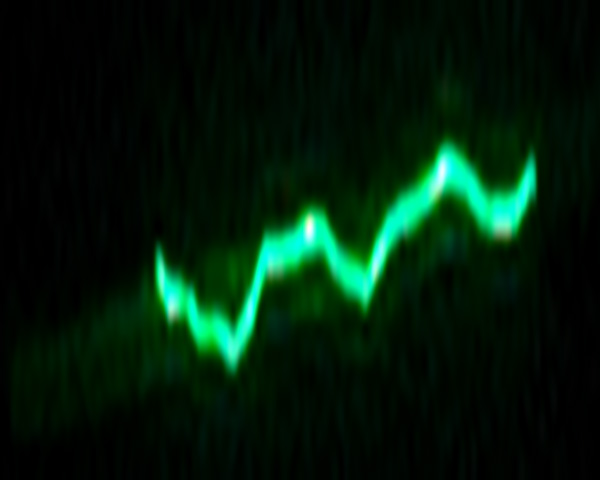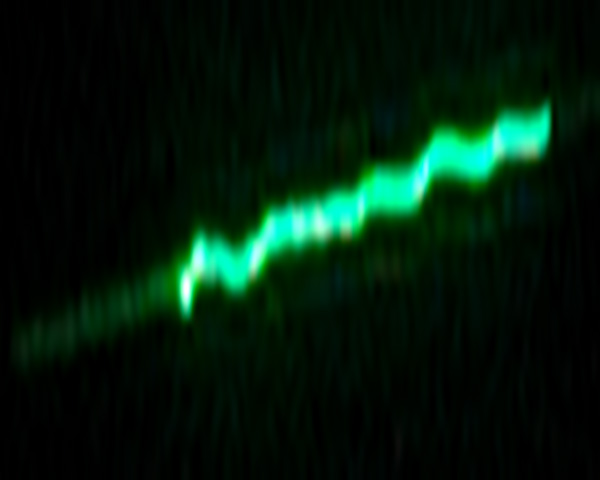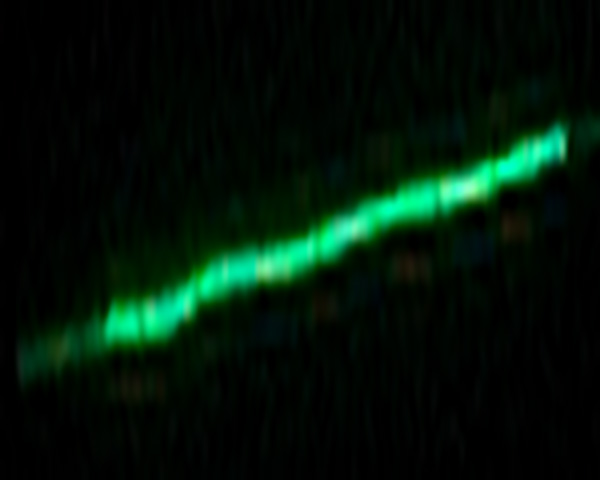Yesterday, I reported on camera vibration with the Zeiss 135mm f/2 APO Sonnar ZF.2 on a Nikon D800E in landscape orientation. See that post for details on the test setup. Today I show results with the camera in portrait orientation, flipped on its left side using the RRS L-bracket. The direction of the oscilloscope trace is still from left to right, vertical displacement means up-and-down movement. The shutter and the mirror of the D800E operates up and down when the camera is in landscape orientation, and side to side when it’s in portrait-shooting position. Therefore the traces show what is likely to be the smaller displacement direction, although the tripod and head used in this test has in the past shown an “ability” to turn vertical excitation into horizontal motion and vice versa.
First up, portrait with S mode at 20 milliseconds per division and 1/8 second using nearest neighbor:
And using preserve details:
We see a 7 or 8 pixel peak to peak oscillation at about 25 Hz, with a 100 Hz smaller oscillation that damps out after three or four cycles.
With the mirror up, and nearest neighbor:
And with preserve details:
The 25 Hz oscillation with the mirror operated normally is absent. There is a 3 or 4 pixel peak to peak resonance at about 40 Hz and a smaller one at about 100 Hz.
S shutter mode at 5 milliseconds per division and a shutter speed of 1/25 and nearest neighbor interpolation:
And with preserve details interpolation:
The first-curtain-closing slap is visible if you look really hard, but it’s tiny, probably because the shutter is fairly well damped, and the lens is so massive.
Portrait orientation and Mup shutter mode at 5 milliseconds per division and a shutter speed of 1/25 and nearest neighbor interpolation:
And with preserve details interpolation:
You can’t see the first curtain closing at all.
The RRS L-bracket and the D800E in portrait mode with shutter speeds of 1/250 or slower is not a tool set that will let you get anywhere near what the 135mm APO Sonnar is capable of delivering. I’d even worry about using the combination at higher shutter speeds.








Leave a Reply